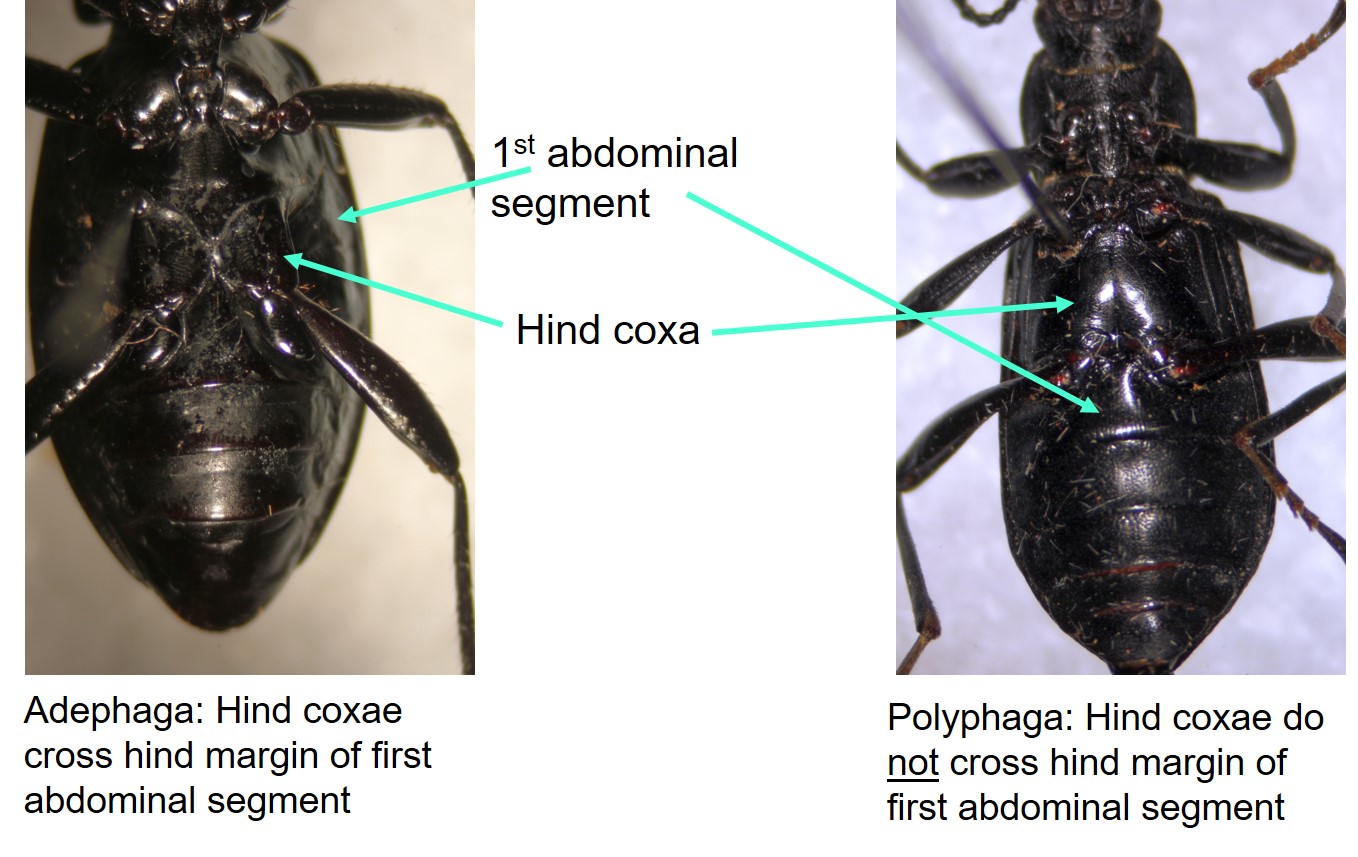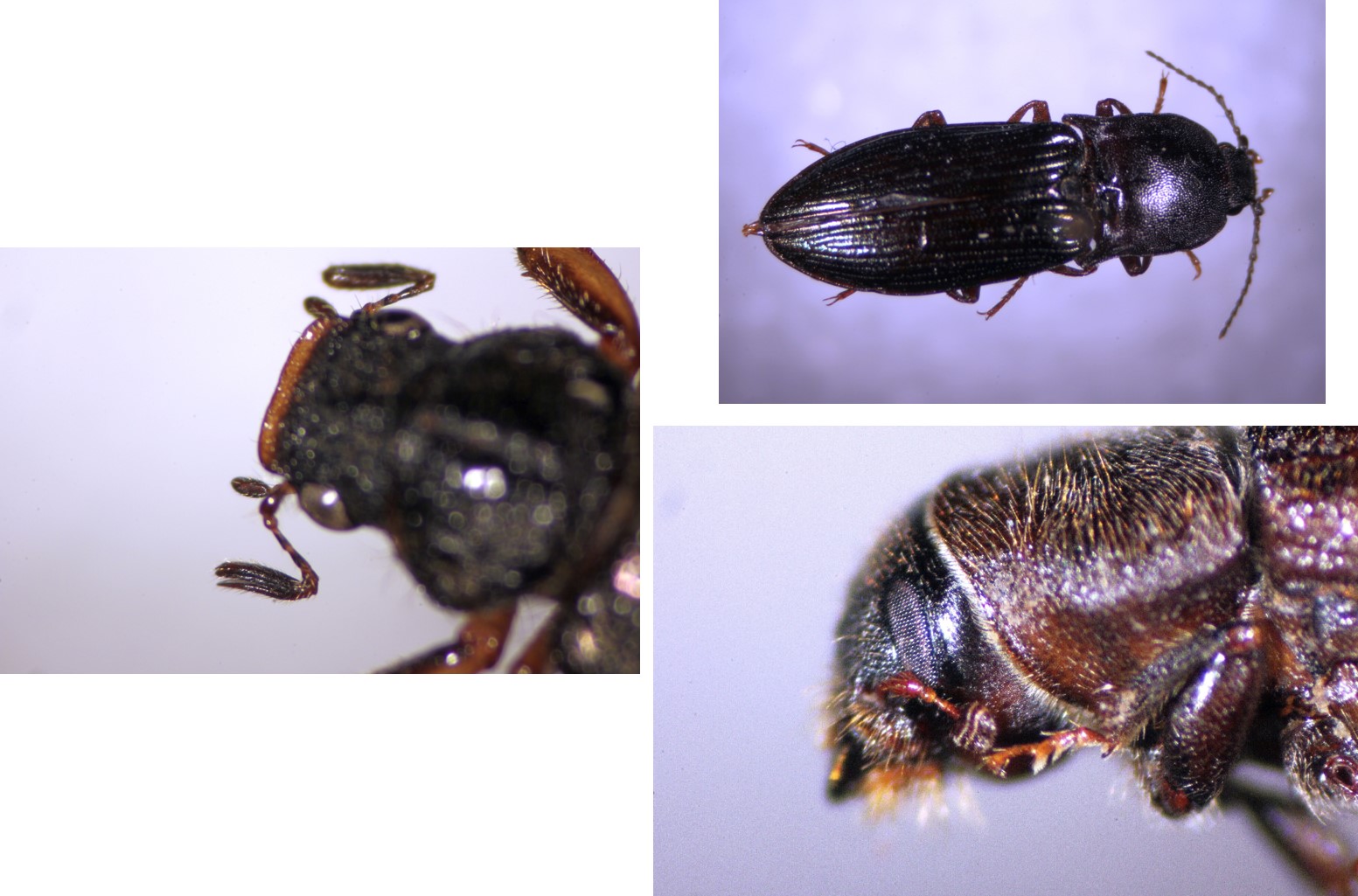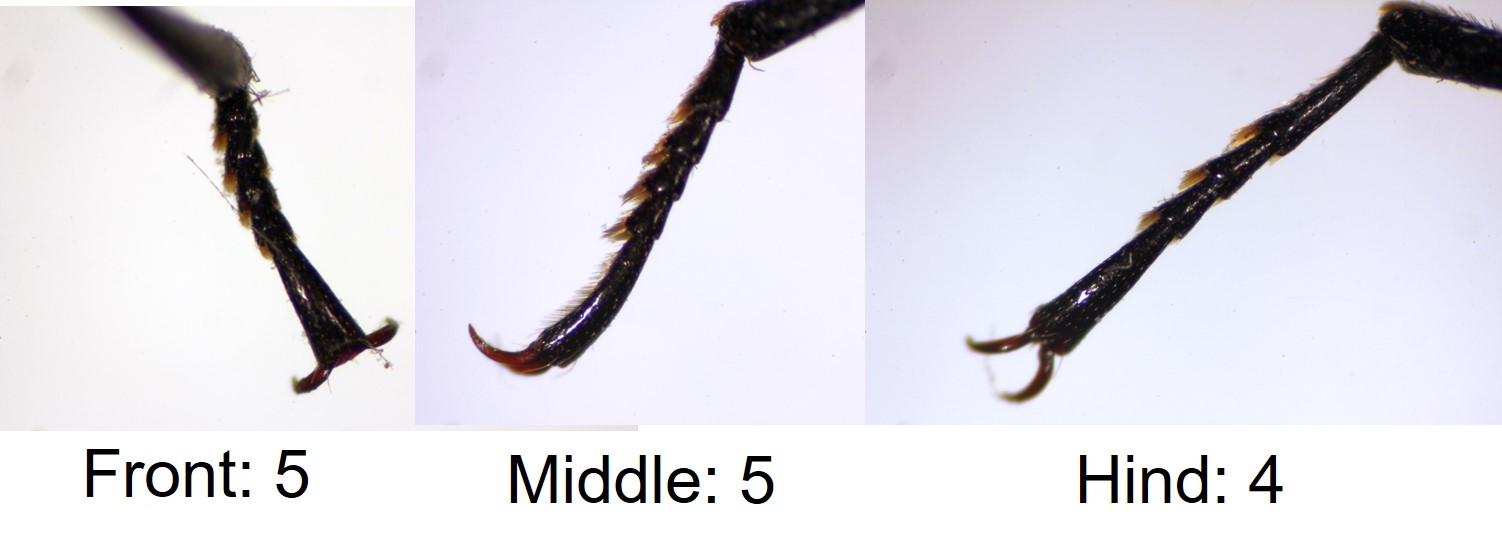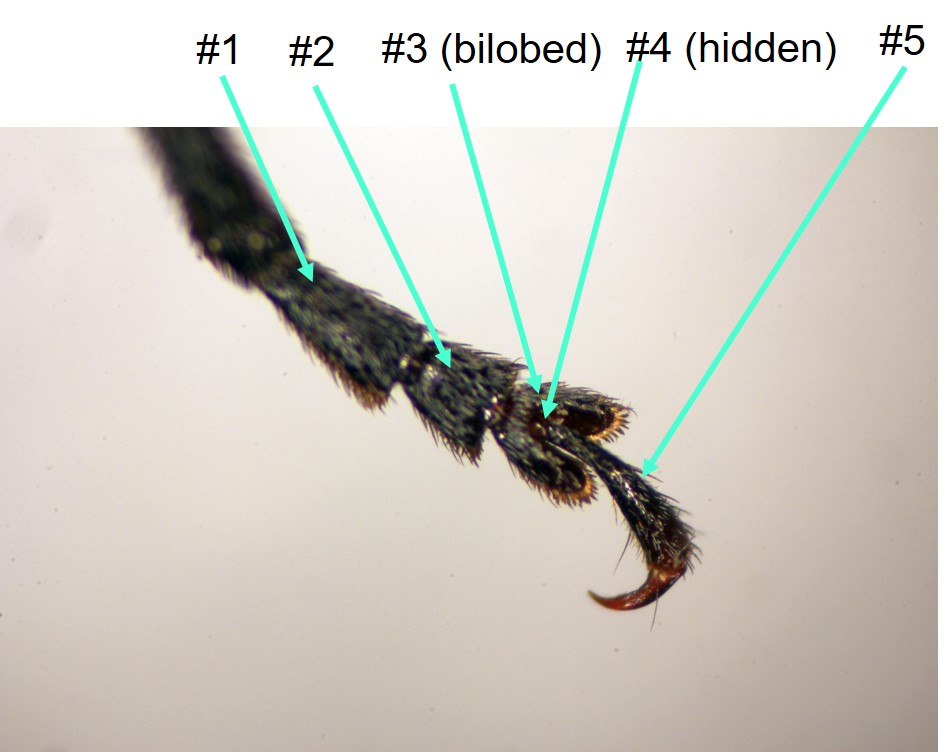59 Coleoptera – Introduction
Coleoptera
The largest neuropteroid order, and the largest order of all insects at the current time, is Coleoptera (“coleo” = “sheath”), the beetles. About one-third of all described animal species are beetles. There are approximately 350,000 beetles described, with ~30,000 species in North America. There is even an entire professional society dedicated to the study of beetles, called the Coleopterists Society. It would be impossible to cover the many families of beetles in a single lab, but we will address a few of the most important families, with an emphasis on those found in northern BC.
All beetles are holometabolous and mandibulate, and have the forewings modified into elytra. These hardened forewings serve as protection for the membranous hindwings, helping beetles access some cryptic habitats. You will see one family, the Staphylinidae, that have reduced elytra that do not cover the entire abdomen; however, many species in this family can still fly. They fold up their hindwings even more than usual to keep them under their shortened elytra.
Beetle larvae are extremely variable. Some are grub-like, while others are highly mobile. Some have large, distinct heads, while in others the head is barely visible. Some are active, prognathous predators. Make sure that you pay attention to the variety of larval forms.
Beetles come in an enormous range of sizes, from the tiny feather-winged beetles at ~0.3-4.0 mm, up to the hand-sized harlequin beetles, goliath beetles, and stag beetles at up to 152 mm or more. Feather-winged beetles have fringed hindwings like thrips, and are small enough that they essentially swim through the air.
Coleoptera is divided into four suborders: Adephaga, Archostemata, Myxophaga, and Polyphaga. You will encounter specimens of two of these suborders, Adephaga and Polyphaga, in this lab, and could encounter a third, Archostemata, in your collections. Adephaga and Polyphaga are distinguished based on the position of the hind coxae relative to the first abdominal segment. It may take a little practice to learn to recognize this characteristic but, once you learn, it is infallible. Start by looking at the ventral side of the beetle. You will need to decide whether the hind coxae lie across the hind margin of the first abdominal segment (Adephaga), or not (Polyphaga).

Other key characteristics that will help you distinguish between the many families of beetles include the antennal shape. Antennae may be lamellate, consisting of finger-like projections on one side of the antenna’s tip, filiform, which means all segments of the antenna are about the same width, or clubbed, meaning that the last few segments are enlarged to form a much wider area of the antenna. Here are some examples of those three forms.

At some point when you are trying to identify a beetle to family, you will almost certainly encounter a “tarsal formula”. Beetles may have different numbers of tarsal segments on the front, middle, and hind legs. Different keys express this formula differently, with some simply saying, e.g. “tarsi 5-5-4”. That would tell you that there are five tarsal segments on the front legs, 5 on the middle legs, and four on the hind legs, as illustrated below. Other combinations are also possible.

One last point to note about tarsal segmentation: some families of beetles are described as having “apparently” three- or four-segmented tarsi! In the case of a beetle with five tarsal segments, for example, the third segment (counted from the base of the tarsus, nearest the tibia) may be bilobed and expanded, with the fourth segment hidden or nearly hidden in between the two lobes. If you are counting quickly and not careful, you may think that the tarsus shown below has four segments when, in fact, it has five. The fourth is very small, tucked away between the lobes of the third tarsomere, and easily missed.



Feedback/Errata